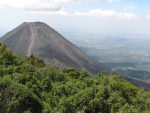Study Snapshot: CLIMATE CHANGE AND CHALLENGES FOR TOURISM IN CENTRAL AMERICA 2010-03
 Tourism has been a very dynamic activity worldwide over the last fifteen years (until the 2008-2009 economic crisis). Some developing countries have been very active in promoting this activity and have beensuccessful. Among these countries are several from the Central American region, where tourism accounted for more than 8% of Costa Rican and Panamanian GDP in 2006. Tourism is a very broad activity, which includes leisure, business and family visits, but statistics for this region do not allow a distinction between these categories. Some countries are more specialized in leisure tourism (Belize and Costa Rica) while others have a more diversified visitor composition (El Salvador and Panama). Nevertheless, all countries have plans to considerably expand its leisure tourism, which depends to a great extent on their natural attractions, mostly on the coasts or near its coasts. The study mostly concentrates on this kind of tourism.
Tourism has been a very dynamic activity worldwide over the last fifteen years (until the 2008-2009 economic crisis). Some developing countries have been very active in promoting this activity and have beensuccessful. Among these countries are several from the Central American region, where tourism accounted for more than 8% of Costa Rican and Panamanian GDP in 2006. Tourism is a very broad activity, which includes leisure, business and family visits, but statistics for this region do not allow a distinction between these categories. Some countries are more specialized in leisure tourism (Belize and Costa Rica) while others have a more diversified visitor composition (El Salvador and Panama). Nevertheless, all countries have plans to considerably expand its leisure tourism, which depends to a great extent on their natural attractions, mostly on the coasts or near its coasts. The study mostly concentrates on this kind of tourism.
 The Central American countries’ rich biodiversity, forests, coral reefs, attractive beaches, amongothers, are under serious threat because of climate change effects, some of which are already being experienced. The vulnerability to these events is a result not only of the region’s geographical location but also of the degree to which the countries’ natural resources have been degraded, especially the accelerated deforestation in most of them.
The Central American countries’ rich biodiversity, forests, coral reefs, attractive beaches, amongothers, are under serious threat because of climate change effects, some of which are already being experienced. The vulnerability to these events is a result not only of the region’s geographical location but also of the degree to which the countries’ natural resources have been degraded, especially the accelerated deforestation in most of them.
Hurricanes are becoming more frequent and intense, and so are flooding, droughts, while rising sea levels and higher temperatures are to become more evident in the near future, according to scientificprojections. Tourist sites are particularly sensitive to these changes, but little is being done to adapt theseactivities accordingly. Leisure tourism traveling to the region in mid year will be the one mostly affectedby climate change (temperatures could increase by 4°C in some tourist locations in July 2050 and greaterextreme weather events could also occur around that time of the year, according to not particularly pessimistic scenarios).
This paper looks at the different Central American countries’ tourism characteristics and vulnerability to climate change phenomena; compares the different situations of tourist sites among the countries of the region; looks into the legal and institutional framework that has been developed regarding environment protection and climate change in each country under study, analyzing its progress and limitations; explores the determinants of tourism demand in the past, including the role of hurricanes and other external shocks on the flow of tourists and, finally, suggest some adaptation policies mostly for leisure tourism.

COMMENTS